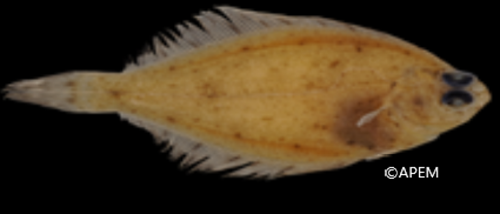
Technical Manager: Jim Ellis Cefas
Component Administrator (2019-): APEM Ltd
Fish Ring Test (FRT)
This module examines inter-laboratory variation in the participants' ability to identify fish specimens and attempts to determine whether any errors are the result of inadequate keys, lack of reference material (e.g. growth series), or the incorrect use of satisfactory keys.
A set of fifteen fish specimens are distributed in each Scheme year. Details of substratum, salinity, depth and geographical location and a series of specimen images were provided for all ring test specimens to assist identification.
The specimens distributed are obtained from a range of surveys from around the UK. Specimens are also donated by Scheme participants and other organisations. Every attempt is made to provide animals in good condition and of similar size for each laboratory. All specimens of a given species are taken from replicate trawls or nets within a single survey and in most cases are derived from replicates at a single sampling location. Where relevant, all specimens of a given species are of the same sex. Each specimen sent is uniquely identifiable by means of a coded label.
The participating laboratories are required to identify each of the RT specimens to species and provide the Species Directory code (Howson & Picton, 1997) for the specimen (where available). If a laboratory would not routinely have identified the specimen to the level of species then this is detailed in the 'confidence level' field on their results form. Laboratories can also add brief notes and information on the keys or other literature used to determine their identifications. RT specimens are retained by the participant laboratories for incorporation into their in-house reference collections or for future use as training material.
Fish Reverse Ring Test (FRRT)
Similar to the Fish RT, this module examines inter-laboratory variation in the participants' ability to identify fish specimens from their own surveys and attempts to determine whether any errors are the result of inadequate keys, lack of reference material (e.g. growth series), or the incorrect use of satisfactory keys. The Fish RRT also attempts to improve the examination method by analysing identifications given to fresh specimens instead of preserved and analysing fish species encountered by the participant.
Participants can supply up to 15 species for verification, which have been collected during fish surveys. Individual specimen bags and insulated postage boxes are provided for specimen submission, along with forms to include details of the resources used for identification. Protected species are photographed only; with images supplied for verification. Participants can also provide images to support their identification of any physical specimens submitted (e.g. focusing upon key features, or other individuals not supplied). To prepare the fish during surveys, they are immersed in a lethal dose of clove oil or 2-Phenoxyethanol until death is confirmed. The fishes are then sent to APEM’s marine laboratory for verification; material can be supplied on ice or preserved (with clear information for any chemicals contained in the submission).